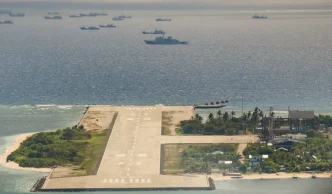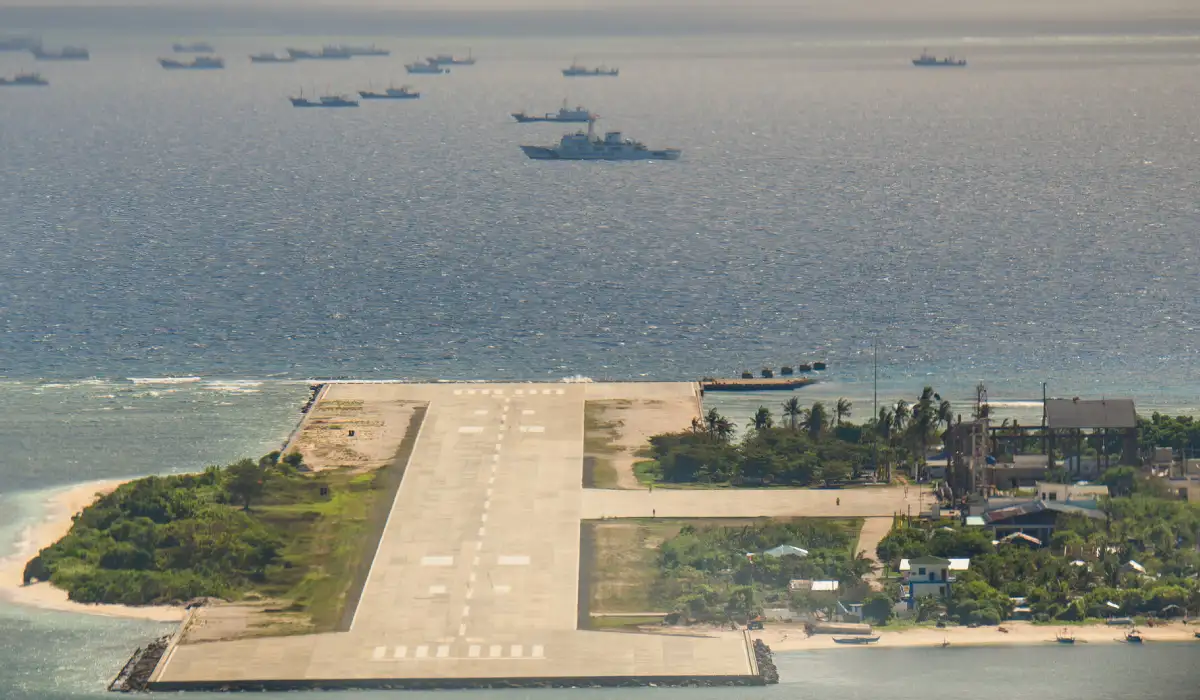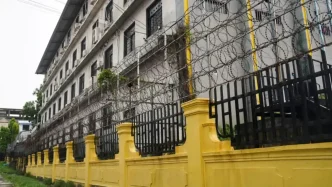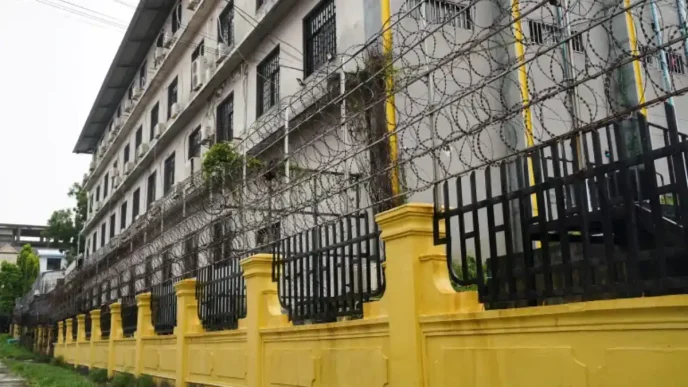On Thitu Island, a tiny speck of land in the heart of the disputed South China Sea, 335 Filipino civilians carve out a life of quiet resilience. Known locally as Pag-asa—meaning hope in Filipino—this remote outpost lies 500 kilometers west of Palawan province, within the Spratly Islands, a cluster of atolls and reefs claimed by six nations. Here, the daily presence of Chinese vessels on the horizon serves as a stark reminder of the geopolitical tensions that shadow these waters, believed to be rich in oil, gas, and vital fishing resources. For the island’s residents, their very existence is an act of defiance against China’s expansive maritime claims.
A Community Rooted in Patriotism
Thitu Island, spanning just 37 hectares, has been a Philippine holding since 1971, when Manila seized control after a typhoon forced a Taiwanese garrison to retreat. Formally annexed in 1978, the island was opened to civilian settlement in 2002 as part of a strategy to reinforce the country’s sovereign claim. Today, a tight-knit community of fishermen, government workers, and their families lives alongside an undisclosed number of Filipino troops, their lives intertwined in a unique symbiosis.
Elmer Bania, a 62-year-old government worker, embodies this spirit of endurance. Having moved to Thitu with his family in 2012, he speaks of Pag-asa as both a home and a symbol. “We’re not going to let China take over Pag-asa. This is our home! Filipinos do not yield to anyone” he told reporters during a rare media visit facilitated by the Armed Forces of the Philippines (AFP) ahead of the country’s Independence Day on June 12. For Mr. Bania, whose family runs a small store and works at the municipal hall, the island offers a peaceful, low-cost life far removed from the struggles of his hometown in Taytay, northern Palawan.
The community’s daily routines unfold against a backdrop of isolation and hardship. Homes are cobbled together from plywood, cement, and scrap metal, while fishing boats line the white sand beaches of the eastern shore. Children play dodgeball on dusty roads, and supplies—often costing hundreds of thousands of pesos for a single trip from the mainland—arrive sporadically by military aircraft or boat, subject to the whims of weather. Yet, there is a palpable pride among residents, many of whom see their presence as a quiet form of patriotism.
Tensions on the Horizon
Beyond the idyllic scenes of island life, tension simmers. Chinese-flagged vessels are a constant presence, often shadowing local fishing boats or idling near the pier. Mr. Bania recalls earlier times when Chinese ships dredged coral reefs just miles offshore, leaving locals powerless to intervene. “We couldn’t do anything then. We were too few” he said. Now, with support from the AFP, male residents have received basic military training, and visiting officials deliver lectures on the geopolitical and environmental stakes of their home. Mr. Bania notes that locals are prepared to act if needed, citing an incident where they blocked the airstrip with fuel drums upon hearing rumors of a foreign plane landing.
For fishermen like Fernan Lozada, 36, who relocated to Thitu during the COVID-19 pandemic seeking stability, the Chinese presence has forced adaptations. Areas like Sandy Cay, a sandbar just two nautical miles away, have become flashpoints. In April, Chinese coast guard officers planted their flag there, prompting Filipino sailors to respond days later by raising their own. “We learnt to adjust to China. We’re just small fisherfolk; we can’t fight back” Mr. Lozada said. Many now avoid western waters off Thitu, where encounters with Chinese vessels are frequent.
Military Presence and National Resolve
The Philippine military’s role on Thitu and other Spratly features is equally critical. Soldiers assist civilians with everything from unloading supplies to building schools, while also maintaining a defensive posture. Across the Spratlys, troops endure harsh conditions in remote outposts. On West York Island—known locally as Likas, meaning natural—soldiers live in spartan quarters made of timber and salvaged metal, reliant on periodic resupply missions for food and water. Power comes from a single generator, and internet access is minimal, yet their resolve remains unshaken. “We took an oath to defend this land. This is part of our duty” said Technical Sergeant Nino Calbog, stationed at West York.
AFP spokesperson Colonel Francel Padilla emphasized the importance of sustaining a civilian and military presence in the region. “We have to really affirm our sovereignty in all the features that we have. We must maintain the presence of thriving communities in the area” she told reporters during the patrol. However, compared to China’s transformation of submerged reefs into fortified outposts, the Philippines faces significant challenges. Budgetary constraints and logistical hurdles slow progress, though incremental developments on Thitu—a 1.3-kilometer runway, military barracks, a pier, and ongoing construction of a runway extension and new facilities—signal Manila’s determination to hold its ground.
Life’s Hard Realities and Small Victories
Life on Thitu is not without its challenges. Healthcare is basic, with a small center staffed by a nurse and midwife, and occasional visits from a doctor based in Puerto Princesa City on the mainland. Emergencies require evacuation by military aircraft, a process often delayed by weather. Education, too, is limited, with a modest schoolhouse serving a handful of students up to high school level under the guidance of 15 teachers. Yet, families like the Banias adapt. Mr. Bania’s 14-year-old grandson, Yans, born in Taytay but raised on Thitu, dreams of joining the Philippine Air Force. “I want to defend our motherland” he said.
In 2023, Thitu opened to tourists, marking a subtle shift from a military outpost to a burgeoning community. Some residents have converted their homes into homestays, offering basic accommodations to curious visitors. This small step reflects a broader aspiration to normalize life on the island, even as geopolitical tensions persist. For many, the island’s isolation is a trade-off for stability and a sense of purpose. “There were only a few houses when I first came to Pag-asa, but I felt at peace. And the island is beautiful, so my family decided to stay here” Mr. Bania reflected.
Geopolitical Stakes and Future Uncertainties
The South China Sea remains one of the world’s most contested maritime regions, with overlapping claims from China, the Philippines, Vietnam, Malaysia, Brunei, and Taiwan. China’s sweeping assertions, often backed by militarized artificial islands, have drawn international criticism, though Beijing maintains its historical rights to the area. For the Philippines, maintaining control over Thitu and other Spratly features is not just a matter of sovereignty but also access to critical resources. The waters are a vital fishing ground for coastal communities and are believed to hold significant oil and gas reserves, though exact figures remain speculative pending further exploration.
Manila’s strategy hinges on a dual approach: reinforcing civilian life to legitimize its claims under international law, particularly the United Nations Convention on the Law of the Sea (UNCLOS), and bolstering military capabilities despite limited resources. A 2016 arbitral ruling in favor of the Philippines, which rejected China’s expansive claims, remains a diplomatic tool, though enforcement is fraught with challenges given Beijing’s rejection of the decision. Meanwhile, incidents like flag-planting at Sandy Cay underscore the risk of escalation, even as both sides avoid direct confrontation for now.
Public sentiment in the Philippines often reflects a mix of defiance and pragmatism. On Thitu, residents express confidence in the military’s protection. “They won’t let anything happen to us” Mr. Bania said, echoing a trust shared by many. Yet, the disparity in power between Manila and Beijing looms large. Analysts note that while the Philippines has strengthened alliances with the United States and other partners through joint exercises and defense agreements, tangible support in the Spratlys remains limited by logistical and political constraints.
A Fragile Hope
For now, Thitu Island stands as a fragile bastion of Philippine resolve, a place where civilians and soldiers alike hold the line through their sheer presence. The name Pag-asa carries a weight beyond its literal meaning, embodying a hope that sovereignty can be asserted not through conflict but through the stubborn continuity of daily life. As Mr. Bania put it, “I have already built a life in Pag-asa. My grandchildren are growing up here. We’re already here. We’re not leaving any time soon.”
As geopolitical currents swirl in the South China Sea, questions linger about how long this quiet defiance can endure. Will incremental development and international support be enough to counterbalance China’s growing assertiveness? For the residents of Thitu, the answer lies not in grand strategies but in the simple act of staying put—a small, stubborn stand on the edge of a contested sea.
















